Once you know how to make Pad Thai the right way, you should cook it at least once that way, and then you can experiment with it. In any manner, Thai cooking is generally an improvisation with whatever ingredients are on hand.
I know you will ask, how about substituting the shrimp with chicken or beef? Well, you could do that, but the cooking method would be slightly different. I would recommend adding the chicken to the wok right after the foundation ingredients and before you add the noodles. For beef: if you like your beef well-done then do the same as chicken, but if you want you beef medium or medium rare, add the thinly sliced beef in the same manner I do with the shrimp. You can also use all kinds of seafood. I use scallops, cuttlefish (squid), or combination of many seafoods, and sometimes I even use lobster.
You can change the noodles from rice stick noodles to pasta, Chinese Yaka mein, Lo mein, La mian, Mee pok, Youmain, oil noodles, Japanese udon, soba, or Korean Dangmyeon (cellophane noodles made from sweet potato starch). And all kinds of guksu can be used in Pad Thai.
I would not recommend using Dao xio mian (hand shaved noodles) because they are too thick and unevenly shaped, nor Misua (an extremely thin wheat noodle that makes the smallest angel hair pasta look fat and feel heavy) because it’s way too thin and will clump together. One of favorite among the Thais is glass noodles or cellophane noodles made from muang bean starch.
When I make my variations of Pad Thai, I stick with the foundations and switch the protein, noodles or even go for whatever vegetables are around. You can try that as well, but don’t forget Episode I, the what’s not. I would think cabbage might be ok as a side fresh vegetable but would not cook it together with the noodles, and carrots are a no-no because they shed so much water in the pan when cooked, and are too hard to eat raw as a side vegetable.
However, if you want to try substituting the noodles for shredded carrots, that could be another delicious dish. I made Pad Thai with shredded green papaya before and it turned in to a very delicious Pad Thai salad.
Another fancy way of making Pad Thai is to cook the egg separately as a very large, thin, crepe-like egg sheet and wrap the Pad Thai inside it. You will need at least two eggs for each serving. Beat them slightly, just until the yolk and whites mix.
Before you cook the foundation ingredients of the Pad Thai in the wok, heat another flat nonstick pan over medium heat and spray the bottom with oil. Then right before you put the noodles in the wok, the flat pan should be really hot. Pour the beaten egg on the pan then swirl the pan quickly
so the egg coats the bottom of the pan thinly,
then put the pan back on the medium heat and continue cooking the Pad Thai in the wok.
Once the noodles are cooked, (don’t add the bean sprouts in the Pad Thai wok with this version, but do add the garlic chives) the egg crepe should be ready. If cooking both noodles and egg crepe at the same time sounds too complicated, you can cook the noodles until finish and set them aside in a bowl then make the crepe but never use the same wok. When you had both Pad Thai noodles and egg crepe cooked, pour the finished noodles into the middle of the egg crepe and fold the four sides like an envelope to wrap the noodles.
Flip the finished wrap so the open side down on the bottom of the pan, use the heat to help set the fold of the egg crepe, then transfer the whole wrapped down on to the plate, cut a crisscross on top of the egg crepe to show the contents, and serve with fresh vegetables. You can do this with lobster PadThai as well as shown in the picture on the top of this page.
I love Pad Thai so much that I have sampled many variations of Pad Thai in almost every province that I have visited in Thailand, or when a local from a province brings the cuisine variation to Bangkok. I can summarize some of my experiences here but I don’t have the resources to confirm all of these variations since I’m no longer living in the country. So, take my list with a grain of salt.
Remember, original Pad Thai these days is called “Ancient Pad Thai” or “Pad Thai Bo-ran”. This is the basic Pad Thai, rice noodles with the four foundation ingredients and even the egg was optional. All of the Pad Thai in the outside provinces (outside of Bangkok) are made based on that.
1) Sukhothai province makes Pad Thai with their famous red barbecued pork and barbecued pork skin as an additional protein. This dish used to be called “Stir fired noodle Sukhothai style” or “Guay Tiew pad Sukhothai” and recently was called “Pad Thai Sukhothai”. The different ingredients are not only the barbecued pork, but barbecued pork sauce is also added. The noodles are flash cooked, quite similar to blanching, in boiling water before being added to the wok, resulting in the noodle being broken down in to smaller pieces, softer but not mushy.
The garlic chives and bean sprouts are eliminated from the stir fry and substituted with long beans sliced diagonally and thin. (I usually use green beans if I can’t find long beans.) At the end, the dish would be topped with thinly sliced culantro or long coriander. Sukhothai style usually doesn’t cook the bean sprouts with the Pad Thai, but serves them as a side vegetable along with garlic chives, more long beans and banana blossoms.
2) AngThong province makes Pad Thai with pork fat and adds a little piece of crispy pork fat to the mix too. The Pad Thai sauce is made with added vinegar, but separates the fish sauce out, which would be added back when the noodles are already in the wok. They also eliminate the shallots and tofu from the foundation and, strangely, stir fry the noodles in pork fat with the Pad Thai sauce, fish sauce, egg, and vegetables, then put salted turnip and dried shrimps on top!
First time I saw it, I thought I was at the wrong Pad Thai vendor. I drove around town to see if there was another popular Pad Thai vendor in town. The other one was making his popular Pad Thai the same way as the first guy! It was alright, but I wouldn’t say it’s my favorite. One unique addition was the sour star fruits as a side vegetable.
3) Amphawa, a city in Samut Sakorn province near the Amphawa floating market, has a unique Pad Thai which adds boiled soy beans to the foundation and also uses pork fat oil to fry the Pad Thai (and you know that’s so flavorful almost like adding bacon). They also add their slow-cooked pork belly and its juice to the Pad Thai as well.
4) Khon Kaen province style is simple, stir frying everything, including dried chili and peanuts, into the Pad Thai. I had to order another one without chili because I couldn’t separate the chilis out. It was so unexpected to have it all mixed in, and as soon as I ordered the “no chili” version, the waiter turned around and said to the cook,“One children’s order.”…Haaaaa.
5) Chantaburi is the province where all the best, stretchy, chewy rice noodles were made originally. Their version of Pad Thai was originally called “Sen Chan pad poo” or stir fried noodles with crab. They still call it with the original name in their province, but in Bangkok they might call it Pad Thai Chantaburi. It’s actually not Pad Thai in my mind but I list it here anyway.
They eliminate all of the foundation ingredients but replace it with mushed up shallots, dried chilies and garlic. Although the same sauce is used to stir fry the noodles with their paste but without the egg, the cooked blue crab meat would be added to the mix. There is no vegetable cooked in the wok with the noodles. The dish is served with cucumber, lettuce, bean sprouts, garlic chive and lime wedge, on the side, but no crushed peanuts. You can guess from the different method and ingredients that the flavor of the dish is by far the most different than the rest.
These are the acceptable variation of Pad Thai in many different regions, different provinces of Thailand.
Hopefully, I’ll get to eat “authentic Pad Thai” without having to cook it myself all the time soon! Or it would be even better if people stopped calling their interpretation version of stir fried noodles “Pad Thai”… After all, the dish origination has patriotic history, so give the dish, the country and the people the respect they deserve, would you, please? 🙂
The Pad Thai Trilogy has already been completed. It consisted of three parts.
Pad Thai Trilogy, Episode I: What’s not
Pad Thai Trilogy, Episode II: The “Authentic” recipe
and this is the last part of Pad Thai Trilogy, Episode III: The Variations of Pad Thai

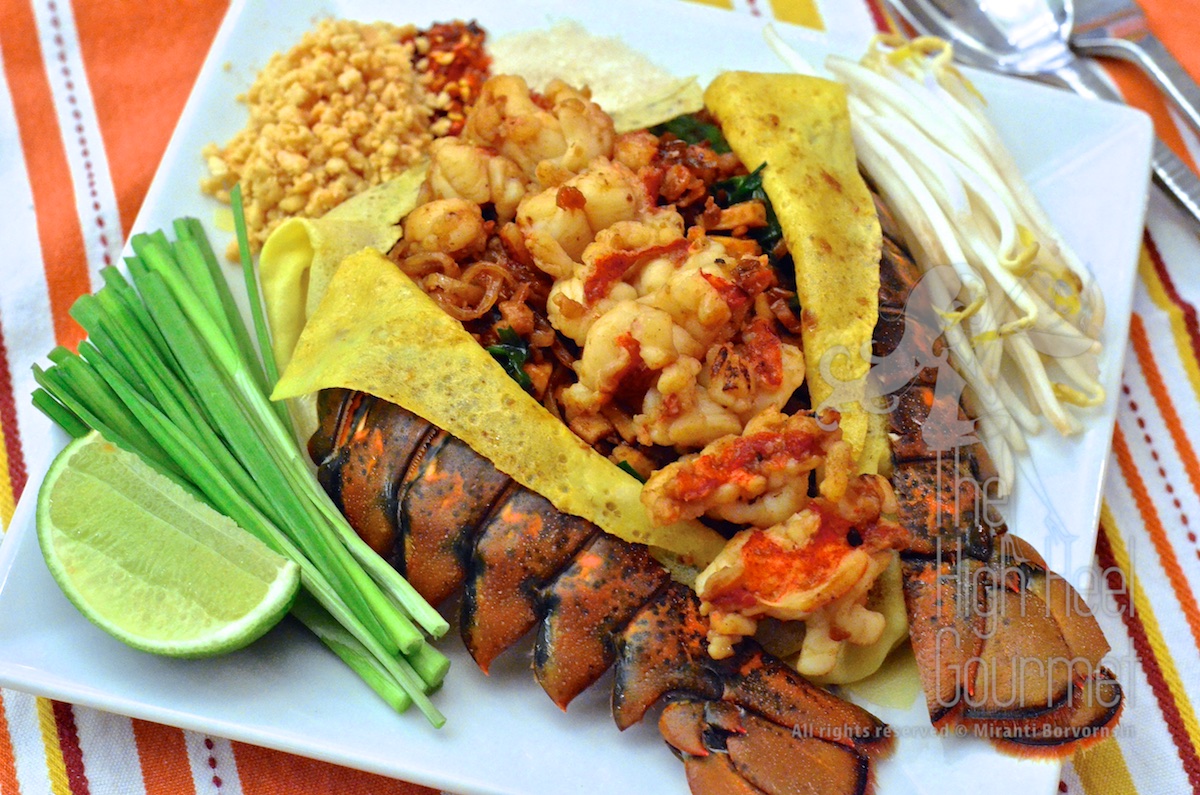
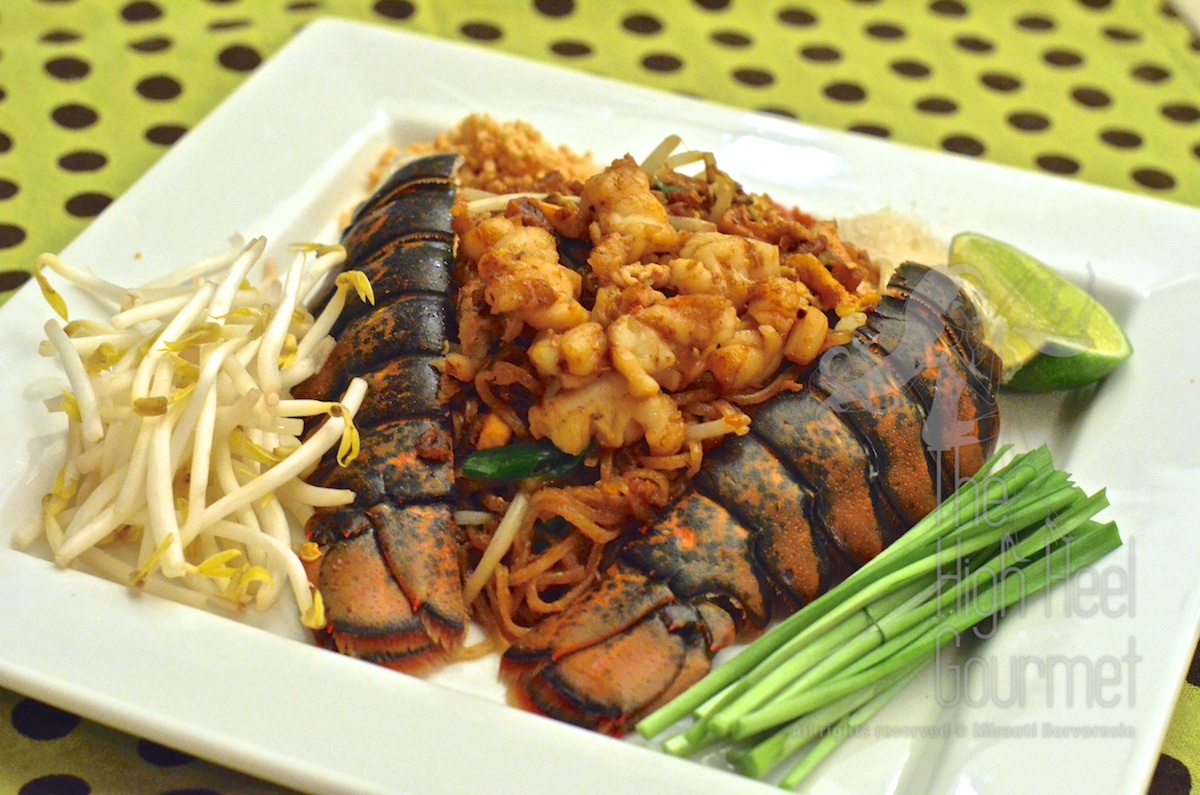
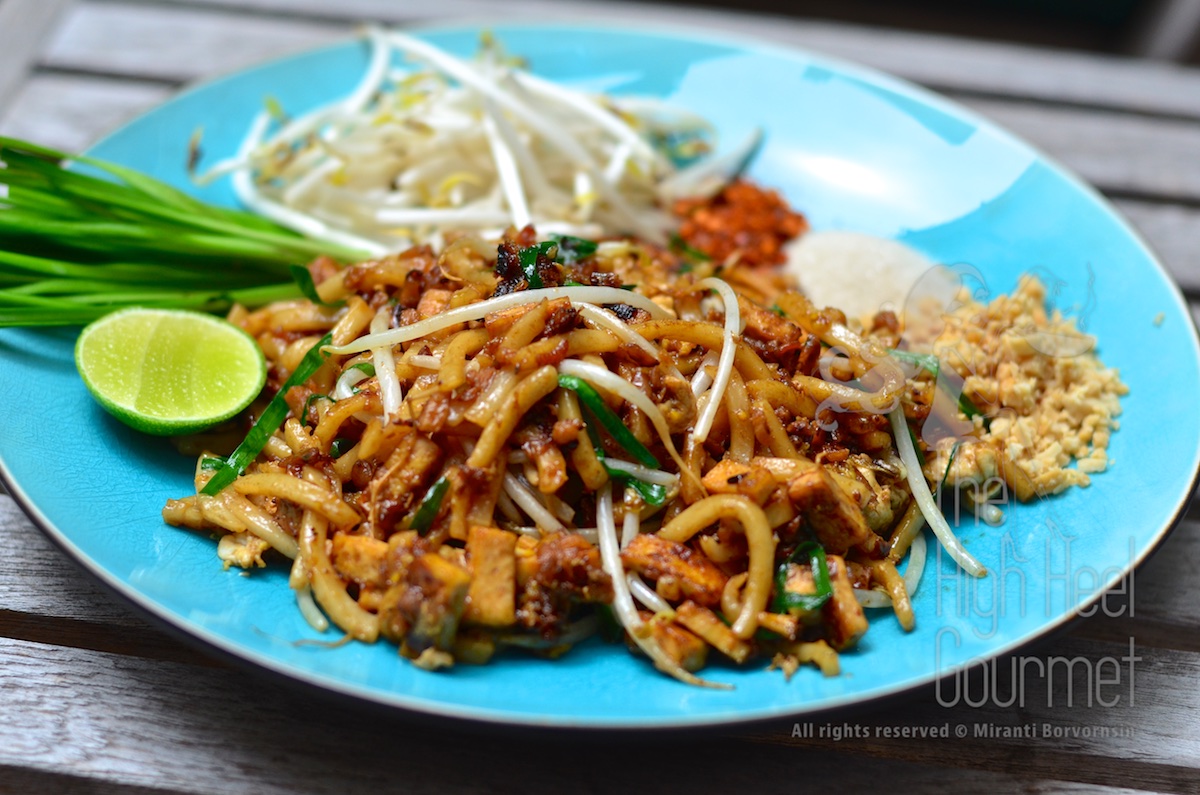
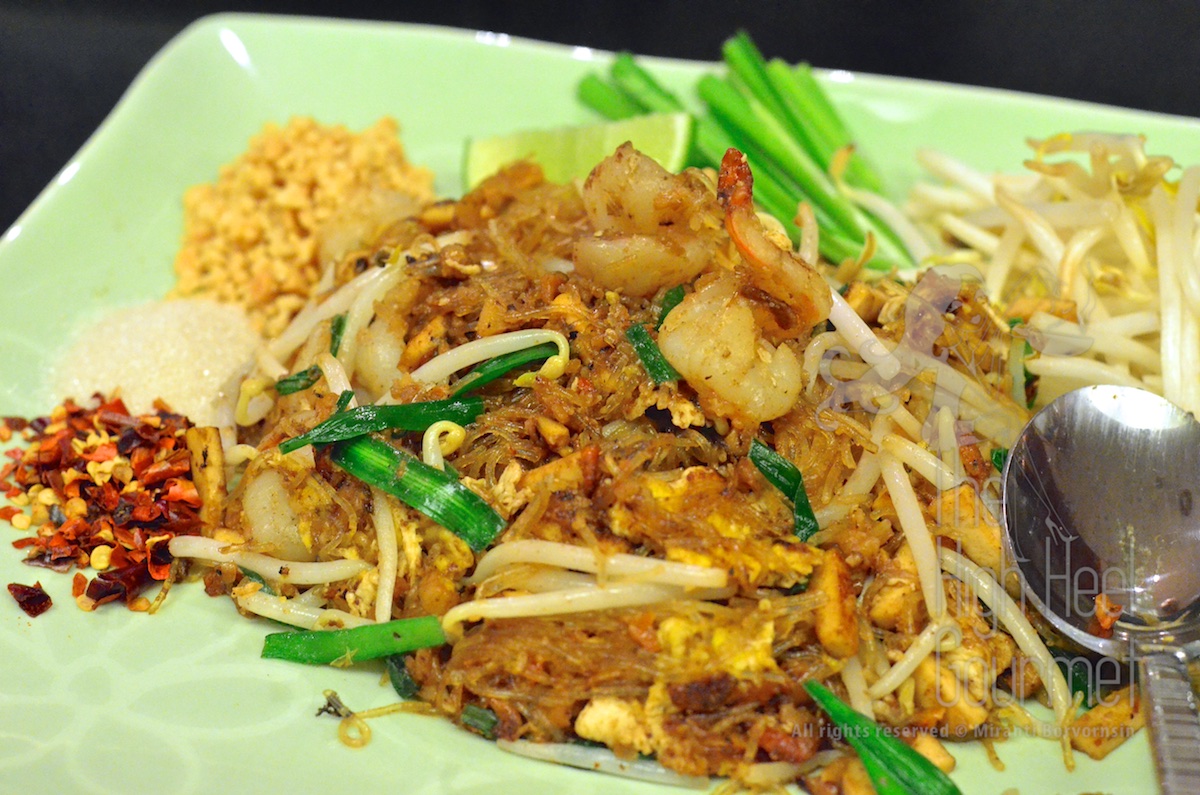
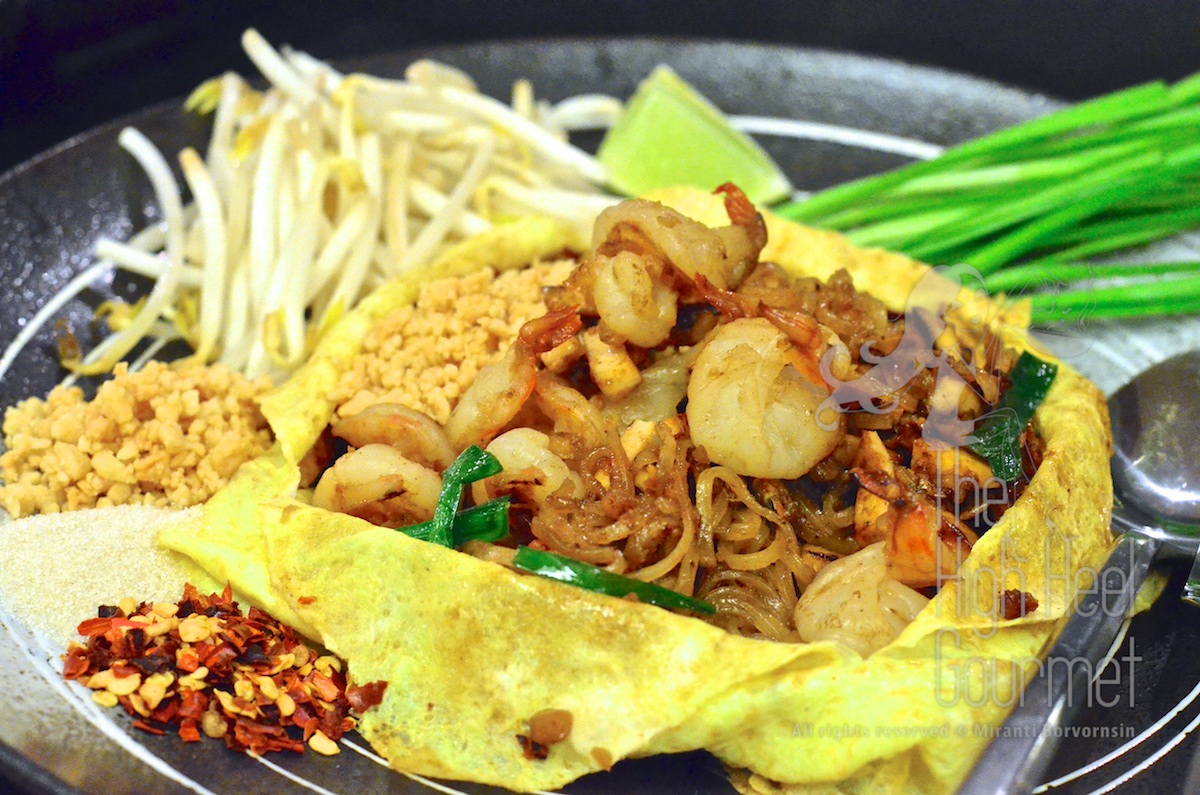
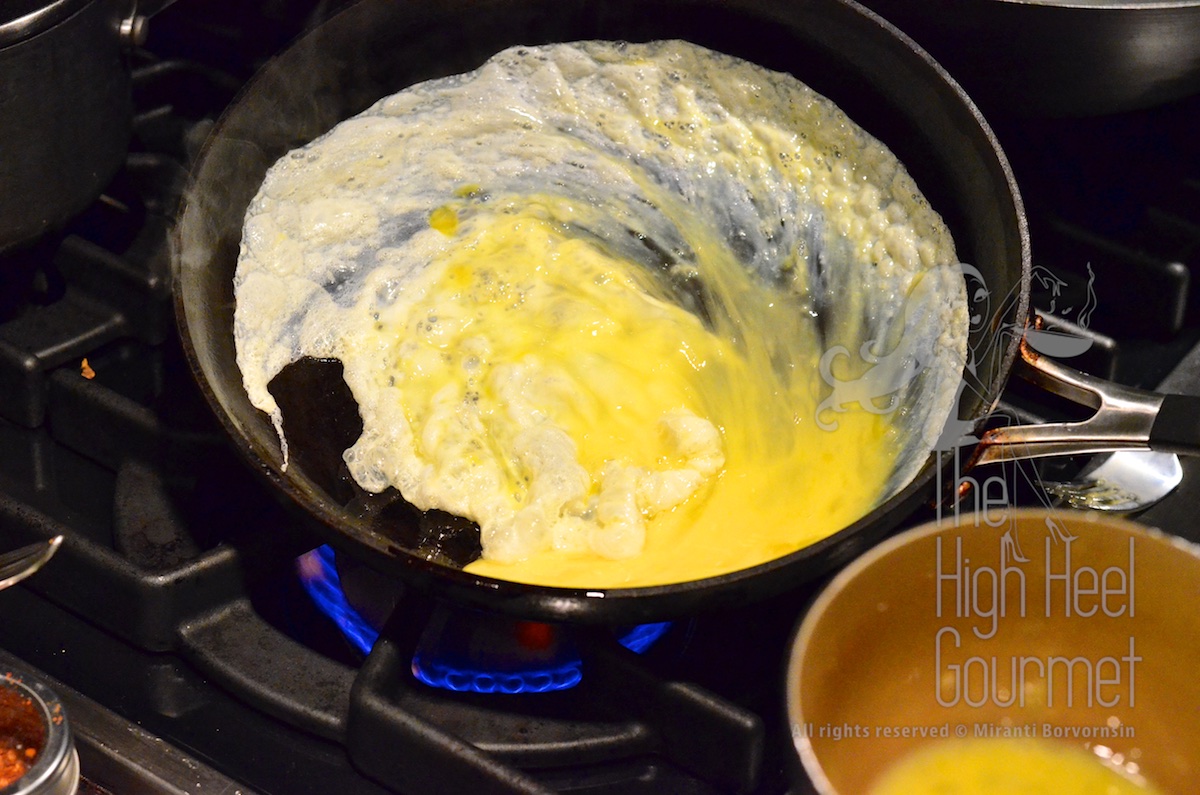
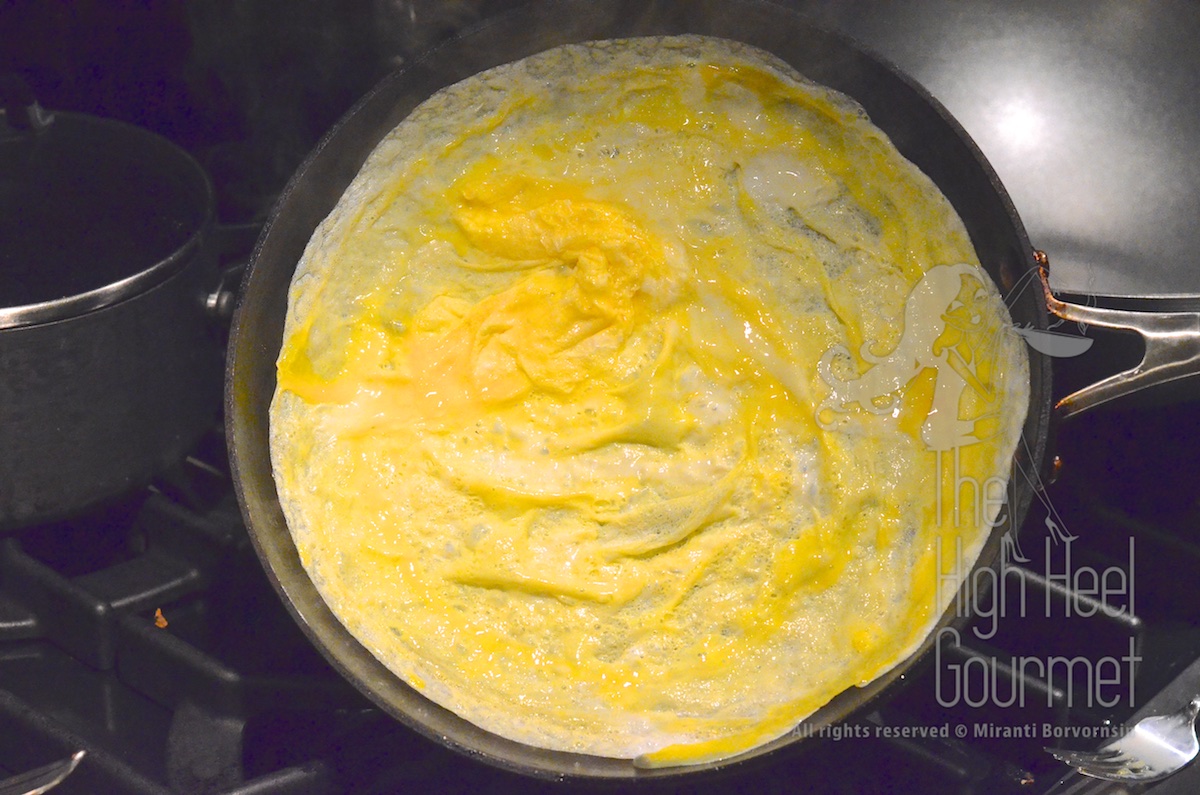
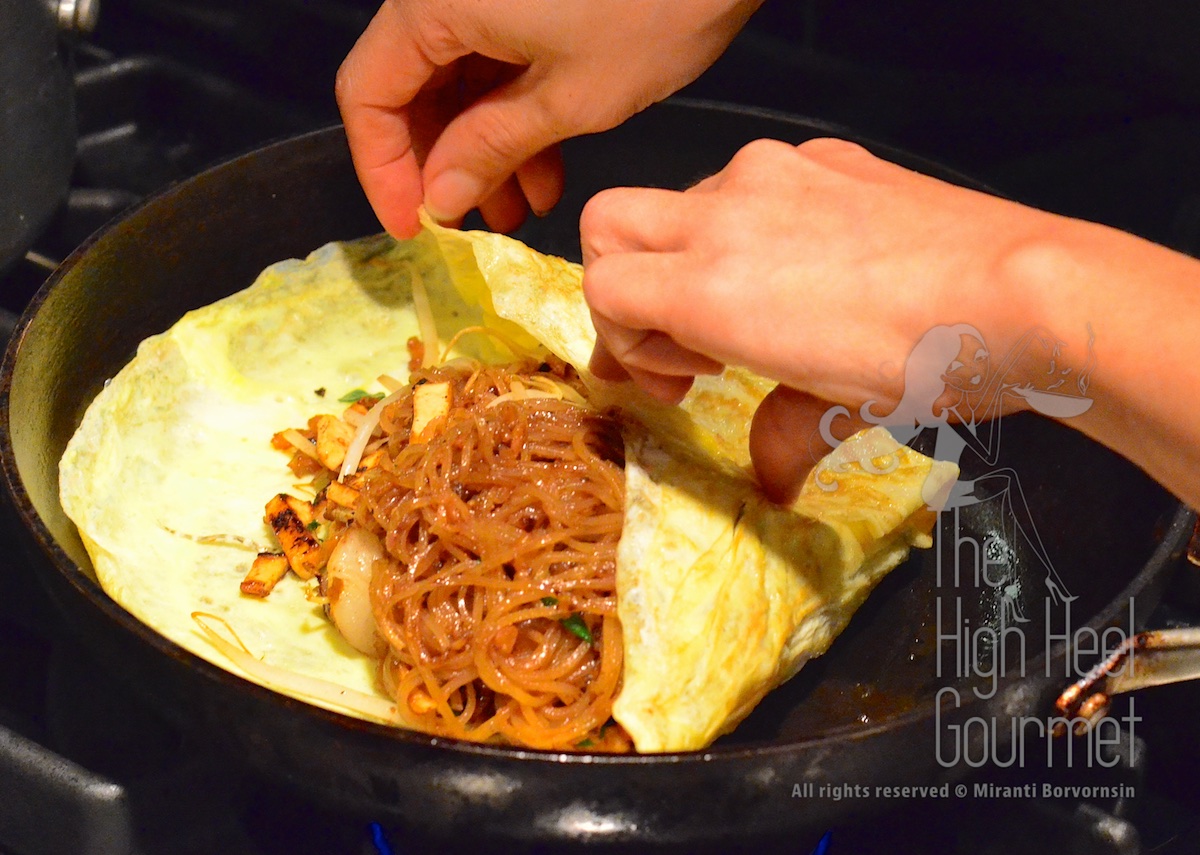
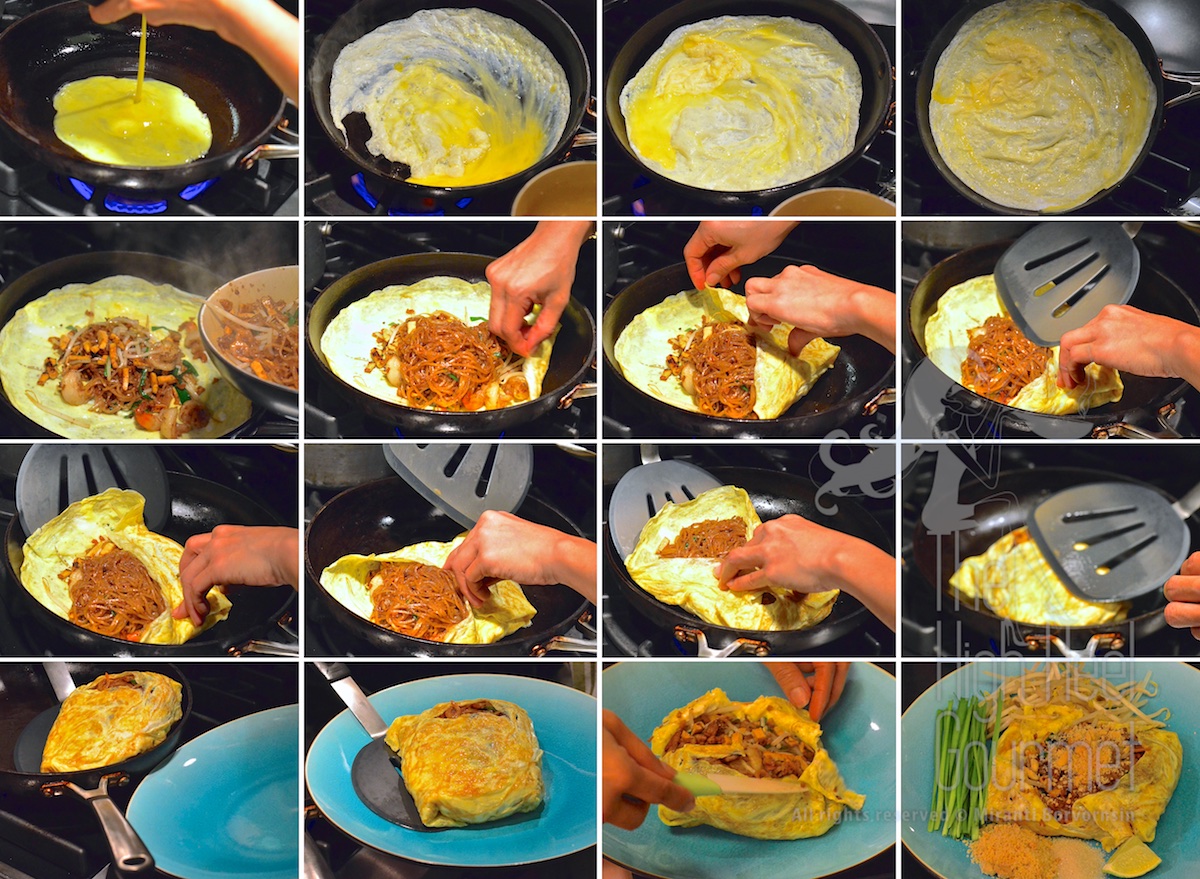
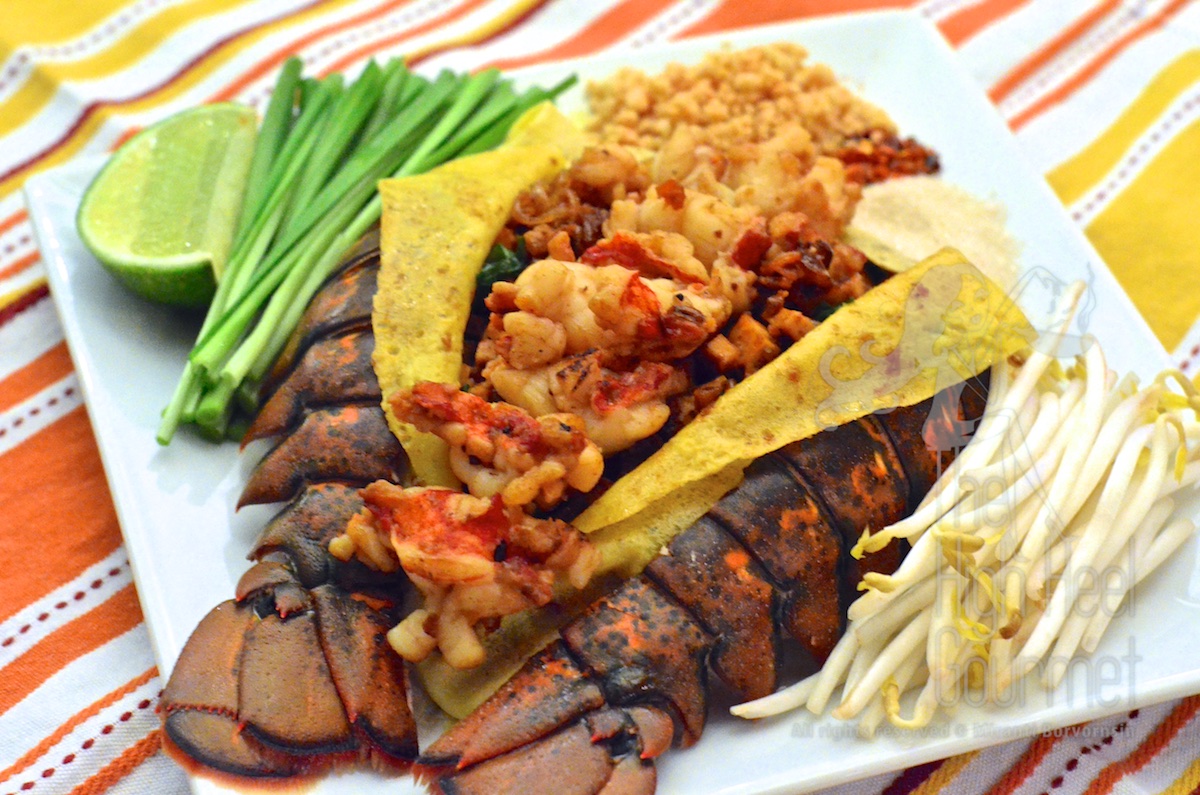
Hi hi hi Miranti!!! I have missed you and after this I’m heading out for Thai!!!!! Pad Thai is my favourite comfort food. Thank you! Sharon
I missed you…Sharon! Enjoy your PadThai 🙂
Hugs! I will! I’m still drooling over your Pad Thai pictures! 😀
Hi.Miranti..do u remember me? now i m following u… big hug my sis
I remember you ka P’Toy, my kind Rajini sister. Thanks for following ka. Please, let me know naka if I make any mistake with the Thai stuff…:)
Lovely thai food missy. Thanks for posting what looks like like a great deal of work. I like your blog so I thought of nominating you for two awards, The ‘Beautiful Blogger’ and ‘Reader Appreciation’ Awards. I hope they bring you even more lovely and well-deserved connections. See here: http://freeflowfoodie.com/2012/09/18/beautiful-blogger-and-reader-appreciation-award-nomination/.
Peace, Aijay
Me gustaría recibir más información sobre esto, ya que es muy agradable., Gracias por compartir
I’m coming to the thread late, having seen your Pad Thai Trilogy come up on a Google search when looking for a recipe for Pad Thai. Needless to say, as a farang who loves Pad Thai, I never considered the historical and cultural implications of the dish. Way more complex than I would have thought. Parts 2 & 3 of the trilogy explain a lot about why there is so much variation in the taste of what has been served to me as “Pad Thai”, depending on the actual ingredients the street vendor had available or had the money to be able to buy that day. That said, I’ve understood enough about Pad Thai being a unique dish that when I try to cook something like it with the ingredients that are available in the country where I happen to be at the time, I don’t refer to the result as Pad Thai, but rather as Pad Thai style or a variation on Pad Thai. I see you live in California. From the times I’ve traveled there, it seems possible to get most, if not all, ingredients for Asian food without much problem. Maybe a little higher cost to cover the transport costs, but certainly no shortage of supply. Those of us who live in other areas of the USA or in countries where there is not a large Asian population must make do with what is available. That which is available is almost always Chinese and/or Philippine with the occasional Japanese ingredients in the mix. Hope you will have patience with and be tolerant of those of us who give it a go with the variety of Asian foods, especially Thai, as best we can with what we have.
Thanks you for the recipes and thank you, also, for the information about Thai history and culture to give the food a perspective.
Everything looks so delicious! I’ve been living in Bangkok the last 6 months and I often find myself disappointed with what I find in the city. I wish most of my pad thai looked as good as the one you cooked with lobster! I think I’ll need to look around your site some more…just saw a recipe for pad kee mao..sen yai is by far my favourite noodles of all in Thailand and what I usually request at the stalls/restos. Yum!!!
Try PadThai at Tip Sa Mai in Bangkok. Where are you in Thailand?
I love your detailed variations from the provinces. Intricate foodie info details like that bring me to have a brain orgasm? 🙂
lol…you should go around Thailand and try them all. It’s fun 😉.
I will.